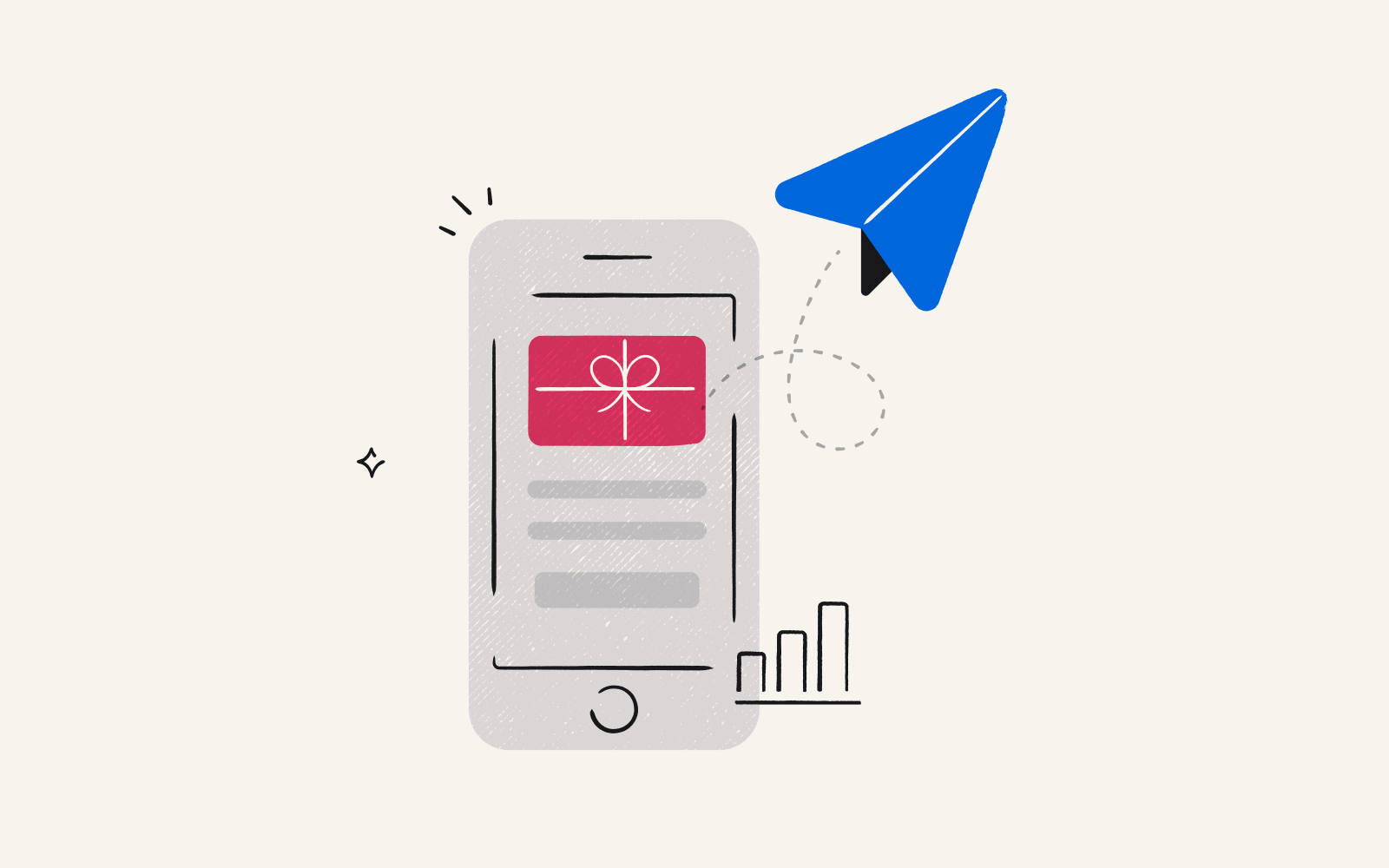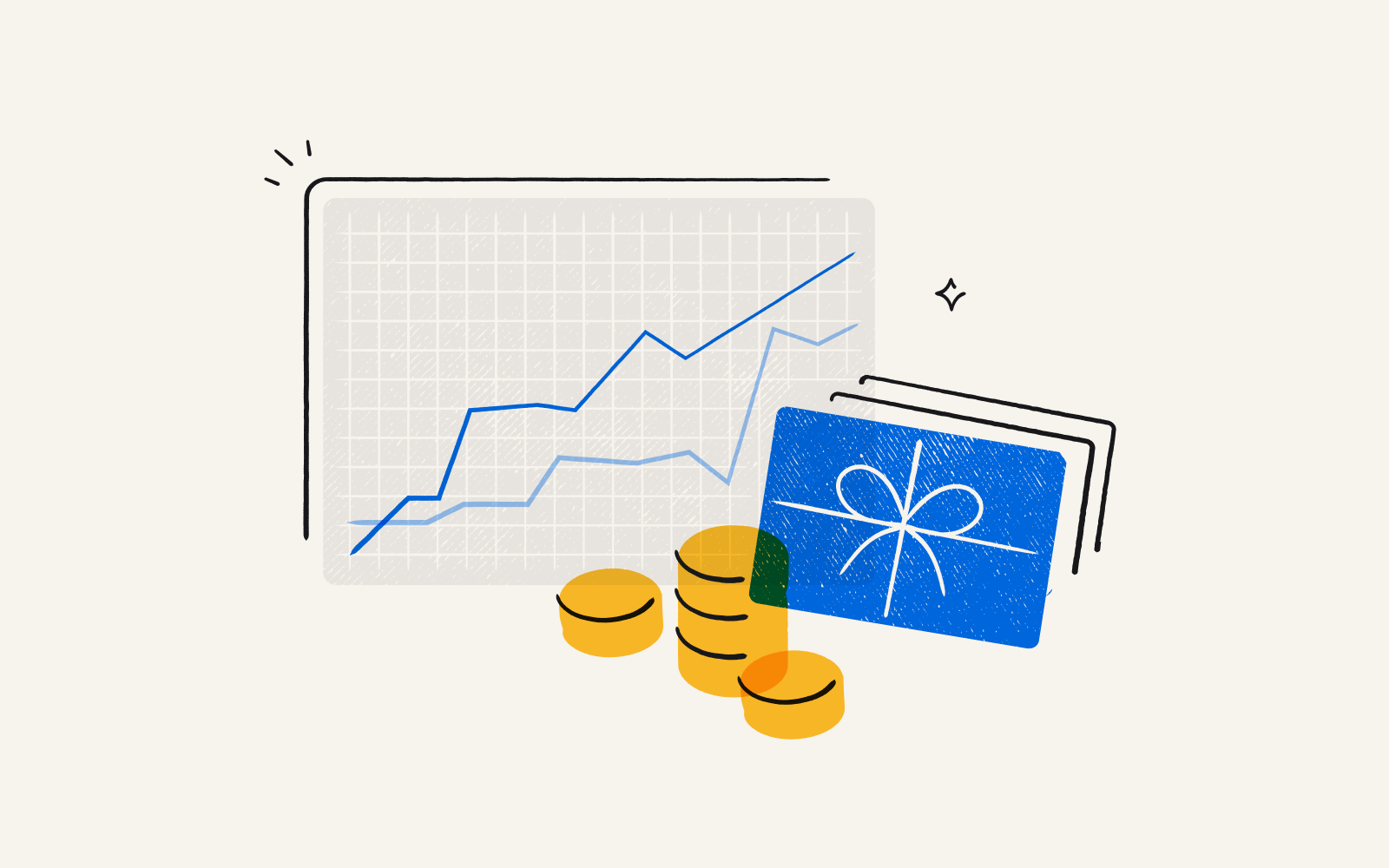Incentives vs. bonuses: What's the difference?
By Aaron Small|5 min read|Updated Mar 29, 2024

Employee incentives and bonuses are two types of rewards offered by employers to motivate employees for exceptional performance.
Both are valuable tools for encouraging employees to do their best work. But depending on your goals, company performance, and budget, one method may be better than the other.
This article outlines the pros and cons of each. We'll help you decide when to choose one over the other for the greatest effect.
What is an employee incentive?
An incentive program is a structured system for providing privileges and rewards to employees.
Employee incentives can come in two forms:
Monetary incentives — including cash, gift cards or prepaid cards (like Visa® prepaid cards), and money added to an employee's paycheck. These incentives are an addition to the employee's base pay.
Non-monetary incentives — including swag, praise and appreciation, gifts, travel, merchandise, experiences, promotions, or professional development. Basically, any privilege or reward that isn't money.
Why are incentives powerful motivators?
People are more likely to behave in a desired way if they’re rewarded with an incentive. According to the work of psychologist B.F. Skinner, humans are wired and driven to seek and get rewards.
That’s why incentives are everywhere. For instance:
A clothing brand offers a 10% coupon if you refer a friend
A company gifts fitness membership for employees who join a wellness program
A parent promises their child more books once they brush their teeth
Incentives are prevalent in the workplace, too. As employee enthusiasm, engagement, and productivity wane over time, the motivational appeal of base compensation can lose power. A formal incentive compensation plan can boost morale and motivate employees.
Businesses often provide incentives in the form of:
Referral programs for hiring
Professional development
Equity incentive plans
Extra PTO
Wellness programs
Care packages
One-off gift card
Catered lunch
Recognition
Incentives can also be awarded spontaneously to recognize special achievements. They promote teamwork and can introduce a dose of healthy competition.
For example, let’s say you require all your staff to complete a boring (but essential) GDPR cybersecurity course. You email them and get minimal response. Release the incentives!
First, you nudge each person with a $20 gift card upon course completion. As an extra incentive, you divide everyone into teams and promise a Free Friday for the first group to finish.
You can leverage creative incentives and see how they shape behavior. But don’t forget that cash makes a splash.
What is an employee bonus?
Say your denim business exceeded expectations and had a profitable year. As a thank you to your employees, you announce a company-wide bonus to wide applause.
A bonus is a financial compensation that compliments the normal base salary of employees.
As they’re a type of incentive, they encourage behavior and drive employee performance. They show appreciation and boost morale among your staff.
What’s considered a bonus? Here are a few examples:
Loyalty bonus for long-term employees
Referral bonus for those who refer candidates
Signing bonus to draw new employees
Performance-based payouts
Equity or stock options
Bonus when products are successfully launched
Holiday bonus
Bonuses are often a percentage of an employee’s base salary. They can be doled out to entry and senior-level executives. Amounts are often contingent on various factors: company health, general economic health, and individual performance
How do employee incentives affect employee engagement and satisfaction?
In a word: heavily.
But let’s drill down further, because incentives work wonders.
They motivate employees and make them more productive. This study indicates that a proper incentive program can increase performance between 20-44%. The longer the program, the better the performance.
They make employees more goal-oriented. Structured incentive programs give employees purpose and direction, which studies show makes them more proactive and focused.
They increase job satisfaction and loyalty. Almost everyone wants to feel appreciated and celebrated for their efforts, either publicly or privately. Not all incentives have to be monetary. An authentic Slack shout-out or giving employees more autonomy and responsibility makes a surprising impact.
Younger employees especially thrive on recognition. 79% of Gen Z/Millennials in a study claimed recognition rewards “would make them more loyal to their employers.” When not recognized, “they will proactively work against you,” the study said. Ouch.
Happy, motivated employees are more engaged and focused. And they’re less prone to absenteeism and leaving your company, another significant business advantage.
How do bonuses affect employee engagement and satisfaction?
Bonuses operate quite similarly – but there are things worth mentioning.
Bonuses are money – a tangible and appealing reward for an employee's hard work and dedication. In fact, most prefer cash or gift cards above other rewards. During the holiday season, our own study found that 65% of employees agree that money is most desirable.
In other words, maybe skip the branded mug and tote bag next year.
Bonuses also show recognition and appreciation, further driving job satisfaction and company loyalty. And that’s important – recruiting and retaining candidates has a huge cost. Companies pay between 90%-200% of the original employee’s salary in losses every time they have to replace a worker.
So, rewarding loyal employees with a small bonus makes a lot of sense.
There’s also a psychological aspect to a structured bonus plan vs one-off incentives.
Because bonuses are usually predetermined in advance and can be common knowledge within company ranks, they build an expectation and orient employees around your goals.
When your sales team knows there’s a year-end bonus on the line, they’ll be more committed to hitting their milestones.
It’s worth mentioning that money doesn’t solve all problems. Companies should also focus on creating a positive work environment, offer growth opportunities, and provide regular feedback and recognition to employees.
The risks of running an incentive or bonus program
Doling out incentives sounds great in theory – but when humans are involved, problems appear. Let’s look at some.
Playing the game unfairly. Some employees may chase an incentive or bonus, no matter the means. This happened on a grand scale during the 2008 financial crisis, where lenders earned bonuses even when selling faulty loans. This can also play out in a typical office environment – employees might pursue a fun incentivized program and slip on their primary job responsibilities.
Solution: Be clear about the rules. Know the priority. Monitor and create controls to avoid potential problems that can arise.
Competition can get ugly. Toxic work environments are bitter places where employees scramble for a limited share of recognition or rewards. For example, executives fight for the sole VP position. Left unchecked, this can lead to resentment and even sabotage, which wholly undermines team health.
Solution: Conduct ongoing feedback from employees on how well your programs are working. Build transparency and open communication to ensure resentments don’t fester.
Pay the tax man. Bonuses or monetary incentives are subject to tax withholding rules, which puts a tangible dent in the amount awarded to employees.
Solution: Get creative with your incentives! Mix in non-monetary items, like one-off gift cards, functional swag, or days off from work. Tremendous can help.
Unmet expectations. Say your denim company dominated last year and awarded bonuses to everyone, hooray. But this year? Not so much. Employees with big hopes may grow disappointed and feel like they’re losing out.
Solution: Be upfront about your bonus program to mitigate any letdown. Employees tied to your mission need to be realistic and understand changing market conditions.
When to use incentives
It all comes down to your objectives. But because bonuses are a type of incentive, overlap exists. Here are some things to keep in mind once you decide what you want to accomplish.
Support short-term goals: Use incentives when you want to motivate employees to achieve quick company objectives. For example, you can boost participation in your all-hands meeting by making surprise announcements and building anticipation. Or incentivize your staff to learn new software with catered lunch or gift cards.
Reward specific achievements: Offer incentives for achieving specific milestones or targets that require sustained effort. This could include hitting revenue targets or launching a product to the public. And remember, recognition is another tool to wield.
Promote team collaboration: Incentives can be effective to build camaraderie among your staff. Offer prizes or simple cash rewards for teams who complete a task first. Another idea? Reward various teams who work cross-functionally on a product launch.
When to use bonuses
Use bonuses for specific use cases, as outlined below.
Mark short and long-term performance: Bonuses are effective rewards within a defined time period, such as a quarter or a fiscal year. Having a structured program promotes productivity and outlines clear objectives.
Boost retention: Use bonuses strategically to recruit and retain top talent. Handing out bonuses for exceptional performance can also boost morale and show you appreciate late nights and hard work.
Celebrate individual and company achievements: When the company does well, share the spoils. Profit sharing among employees boosts productivity.
Conclusion
The lines between bonuses and incentives can get blurry at times, as both help boost morale and drive productivity. But the research is clear: incentives encourage employees to do their best work and reduce turnover.
For a simple way to get started, learn how you can brand a gift card incentive program with your own company logo and colors. Send it off to your employees and let them choose from a list of over 2,000 redemption options.
Want to learn more? Schedule a short call with the team at Tremendous, or sign up today and send your first reward in minutes.
Published March 29, 2024
Updated March 29, 2024


